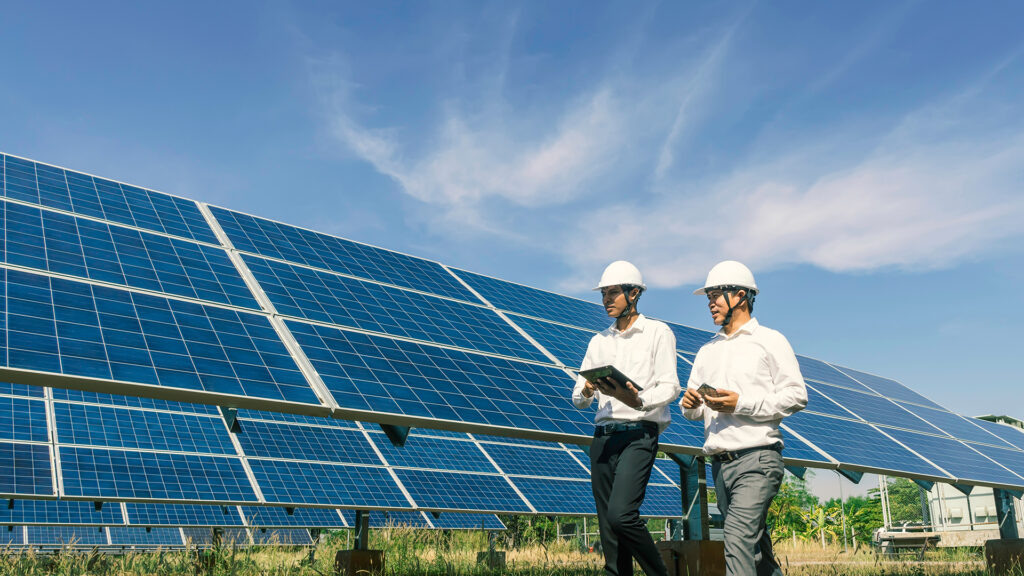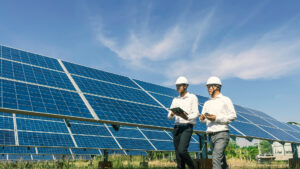Make Use of Solar Energy for Practical Storage Solutions

A reliable storage system for solar energy is vital to ensure the widespread acceptance of solar energy as a sustainable, reliable energy source. Solar energy is plentiful and renewable; however, its fluctuating nature makes it difficult to generate power consistently. The press edge Energy storage solutions permit the excess energy generated during the sun’s peak time to be saved during times of low sunlight or during the night.
If solar energy is stored effectively to store it, a more stable and reliable energy supply can be guaranteed, which reduces the need for traditional fossil fuels as well as reducing carbon emissions. The efficient storage of solar energy will also aid in stabilizing the electric grid and easing stress during peak demand times. Storage of solar excess energy and then releasing it during times of peak demand reduces strain on the grid and decreases the requirement for new power stations.
This is beneficial to individuals who use solar power and enhances the stability and effectiveness of the grid. Furthermore, efficient storage of solar energy can be used to be used as a backup source of energy during power outages or in emergencies, providing an energy source that is reliable if traditional sources of power are not available. The importance of efficient storage of solar energy is crucial in the evolution towards an environmentally sustainable and durable energy future.
Important Highlights
- The efficient storage of solar energy is essential to maximize the power of solar and reduce the dependence on traditional energy sources.
- The types available for solar power storage options include thermal storage, batteries, as well as pumped hydro storage, each having its pros and drawbacks.
- Selecting the ideal solar energy storage system is dependent on factors like the cost, space availability, and energy requirements.
- Enhancing the efficiency of solar energy storage is a matter of proper design, maintenance, and integration with other sources of renewable power.
- Studies of the success in the implementation of solar energy storage systems can provide valuable insight and guidelines for other companies looking at similar projects.
- Future solar storage solutions are bright with new technologies and breakthroughs like advanced battery technology and grid integration options on the horizon.
Types of Solar Energy Storage Solutions
Solar energy storage systems come in a variety of designs, each with its strengths and weaknesses.
Battery Storage
One method of conserving solar energy is using batteries, including lead-acid and lithium-ion batteries. They are used to store solar energy that is generated in the daytime for use at night or during times with low sun.
Thermal Energy Storage and Pumped Hydro Storage
Another storage option that is popular is thermal energy storage, which makes use of heat from the sun to heat the storage medium like molten salt or water, and then be utilized as a source of electricity, or for heating when required. Hydro storage is a different kind of stored solar energy. It uses solar energy to move water up to a higher elevation that can later be released to generate electricity as it is required.
Compressed Air Energy Storage and Flywheel Energy Storage
Furthermore, compressed energy storage (CAES) and flywheel energy storage are feasible options to store solar energy. CAES is the process of compressing air using excess solar energy and then placing it into underground caverns. Flywheel energy storage makes use of kinetic energy to store electricity and release it whenever required.
Advantages and Disadvantages of Different Storage Options
Each kind of solar power storage device is accompanied by distinct advantages and drawbacks. Batteries, like lithium-ion batteries, are renowned because of their energy density, which is high, and a comparatively long lifespan, which makes them an ideal choice for the storage of solar energy. However, they are costly and can degrade over time,e and require replacement.
Storage of thermal energy is, however, the benefit in the able to save huge quantities of energy over long durations, but it also requires a specific infrastructure and could be less efficient compared to other alternatives. Storage that is pump-driven is renowned for its effectiveness and longevity; however, it is constrained by geography and can be expensive upfront. Storage of compressed air energy is cost-effective and can offer large storage capacity; however, it requires certain conditions in the underground for storage.
Flywheel energy storage provides rapid response times and high cycle efficiency, but it may have a limited capacity for energy storage. Knowing the advantages and drawbacks of each storage choice is vital in determining the best solution to meet your specific needs and situations.
How to Choose the Right Solar Energy Storage Solution for Your Needs
When selecting the best storage solution for solar energy, there are several aspects to be taken into account to ensure it is able to meet specific requirements and demands. The most important consideration is the intended use of the stored solar energy, whether it’s intended for commercial, residential, or utility-scale usage. Different applications might require different capacities of storage, as well as response times and other cost-related considerations. It is important to know what solar battery storage functions for you to have the complete picture.
In addition, the space available and the geographical environment must be considered when deciding on a storage option, since some choices might require particular installations or physical conditions. Cost is another important factor when choosing the ideal solar energy storage system because different solutions differ in terms of initial investment, as well as maintenance costs and the length of time. Additionally, the expected life span and the rate at which it degrades of the storage system must be taken into consideration when determining the long-term effectiveness of cost-effectiveness.
The total efficiency and environmental impact of the storage system must be assessed to ensure that it meets the sustainability objectives. If you take a careful look at these elements, both individuals and businesses are able to select the best solar energy storage option to meet their particular needs.
Maximizing Solar Energy Storage Efficiency
The best way to maximize the efficiency of solar energy storage is to optimize the performance and efficiency of the storage solution you select. One method to do this is by ensuring an appropriate system design and sizing to ensure your storage capability is in line with the anticipated energy production and demand. Furthermore, integrating intelligent energy management systems will help to optimize the charging and discharge cycle of the storage system to maximize its effectiveness and life span.
In addition, periodic maintenance and monitoring are vital in order to make sure that your storage functions optimally and stays solid for a long period of time. Another method to increase the efficiency of solar energy storage is to make use of advanced technologies, like predictive analysis and machine learning algorithms, to predict patterns in consumption and energy production. Through the accurate prediction of such patterns, it is possible to maximize the charging and discharging processes of a storage device, which reduces waste and improves the overall efficiency.
Additionally, adding renewable energy sources like hydroelectric or wind power to solar energy storage will increase the overall efficiency of the system by diversifying sources of energy and reducing dependence on grid electricity. Through these strategies, both individuals and companies can increase the effectiveness of their solar energy storage systems.
The Future of Solar Energy Storage: Emerging Technologies and Innovations
The future storage of solar energy holds many possibilities with the ongoing advances in technology and advancements. One new technology that is emerging is the use of solid-state batteries that provide greater energy density, longer life span, and better security compared to conventional lithium-ion batteries. In the market, this type of battery could transform solar energy storage, offering more reliable and efficient solutions for residential and commercial applications.
Furthermore, studies into the development of new materials like graphene and carbon nanotubes might result in breakthroughs in supercapacitors as well as other energy storage devices that are more advanced. Additionally, advances in grid-scale energy storage technology, like the flow battery and sophisticated compressed air system, are opening the way for a larger-scale incorporation of renewable sources of energy into grids. These technologies allow more flexibility and capacity to store excess solar energy at utility-scale levels, resulting in increased stability and sustainability to the grid infrastructure.
Furthermore, advances in control and software allow for the more efficient control of energy sources distributed, which allows an easy integration of storage for solar power systems with the grid infrastructure that is already in place. In the end, efficient storage of solar energy is crucial in maximizing the potential of solar energy as a reliable and environmentally sustainable source of energy. With a wide range of storage options, each with its particular advantages and drawbacks, Careful consideration should be taken when selecting the best option for your specific requirements.
In order to maximize efficiency, using the right design of the system, modern technology, and intelligent management techniques, we can reap the full potential of solar storage for energy. Case studies show the effectiveness of these solutions in different situations, showing their potential to revolutionize our energy system. In the future, new technologies and breakthroughs hold huge potential for further developing solar energy storage technology, which will lead to a more sustainable and secure energy future




